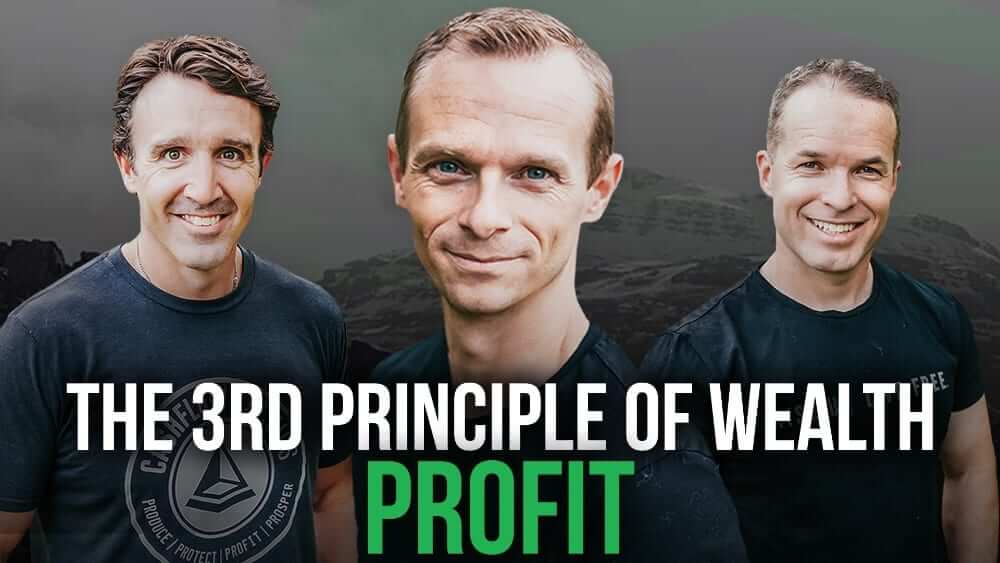The 4 Principles of Wealth Part 3- Profit

We covered the first half of our 4 Core Principles and are finally ready to dive into the one we’re probably most excited to talk about. This week is all about Profit, a commonly misunderstood principle. Unlike what we covered in the first two principles, Produce and Protect, Profit tends to confuse novice and experienced investors alike.
Why exactly is this?
Because we tend to carry a fundamentally biased opinion about assets. In this episode of the Rise Up and Live Free Podcast, Brad and Jimmy explain what it really takes for your assets to produce enough income for financial freedom and any common misconceptions regarding the process.
Ready to level up your understanding from a standard balance sheet approach to the formulaic method of the CashFlow Tactics framework? Learn what it means to be an investor with a capitalist’s mindset as opposed to simply working a job as an investor. There is a monumental difference and you’re about to find out why.
What Is the Difference Between a Worker and a Capitalist
To first answer this question we must consider the moment from which we obtain an asset through the time it begins to produce revenue. If you’re familiar with other businesses like ClickFunnels that seem to generate revenue through their business and do it very quickly you might wonder why it takes so long to do the same through assets. It’s because there isn’t a whole lot of active activity.
Essentially, it all boils down to a misunderstanding of capitalism. We often operate under the assumption that a capitalist doesn’t work for their money. Whereas we see workers trading their time for money. It is a transactional experience that we see clearly and as a result assume it is the only way to produce income.
This is such a common misconception and it is hindering people from achieving a life of financial freedom. In order to break free from this thinking let’s take a moment to consider time preference.
“ A capitalist has a crazy low time preference for cash.” – Jimmy Vreeland
Your average worker needs to make enough cash every two weeks to care for their family. Because a capitalist isn’t constrained in this way, they can shift their focus to predicting the future, which excuses them from active labor.
In this scenario, a worker gets paid immediately while the investor (capitalist) is last in line to receive a cut.
How Does This Method of Profit Differ From Traditional Means to Becoming Financially Free
This has very little to do with passive income. Quite honestly, Brad, Ryan, and Jimmy just don’t believe in it. Investing is an active endeavor and at its core is about leverage. The revenue you build from investments is a result of time, knowledge, and experience.
It’s a matter of understanding the difference between a job and true investing. A job in investing doesn’t result in income from those investments, it comes from the time spent on the job. Alternatively, an investor lives at the end of a pipeline of workers that have invested the time to complete a job. The investor earns the residuals off completed work.
Jimmy’s Portfolio Story
Jimmy’s story serves as a great visual for the connection between action and revenue. He decided to take a hands-on approach and take a part of every aspect of the pipeline.
Let’s look at the Cashflow Quadrant and breakdown how Jimmy served in every quadrant.
E Level Activity: He became head leasing agent. Jimmy spent time talking to new tenants, making sure they’re satisfied, and that maintenance orders were taken care of.
S Level Activity: Jimmy’s role as an Independent Sales license agent is considered to be E level activity. He is paid when a new lease is signed.
B Level Activity: He took the time to reflect on what he needed to do to improve his systems and processes. He built and designed a system and paid to replicate it.
I Level Activity: Jimmy received payment when tenants moved in. He received a check for simply owning the property.
“If the way that you’re investing requires that you’re spending time across the spectrum, then you own a job.”- Bradley Gibb
What’s the Takeaway
This is about owning and understanding how the system works and operates. If you’re looking to be a great investor, focus on the system, not the individual assets. We aren’t teaching you how to do real estate. We’re giving you the tools to understand how to get people and processes together in order to build a functional system.
Ready to build a system that maximizes your profits? CashFlow Tactics is inviting you to take a free 5-day challenge. Ryan, Jimmy, and Brad will guide you to create a personalized financial freedom plan and help you jump-start your journey to financial freedom in 10 years or less.
? Join the FREE 5-day CashFlow Tactics Challenge now!

